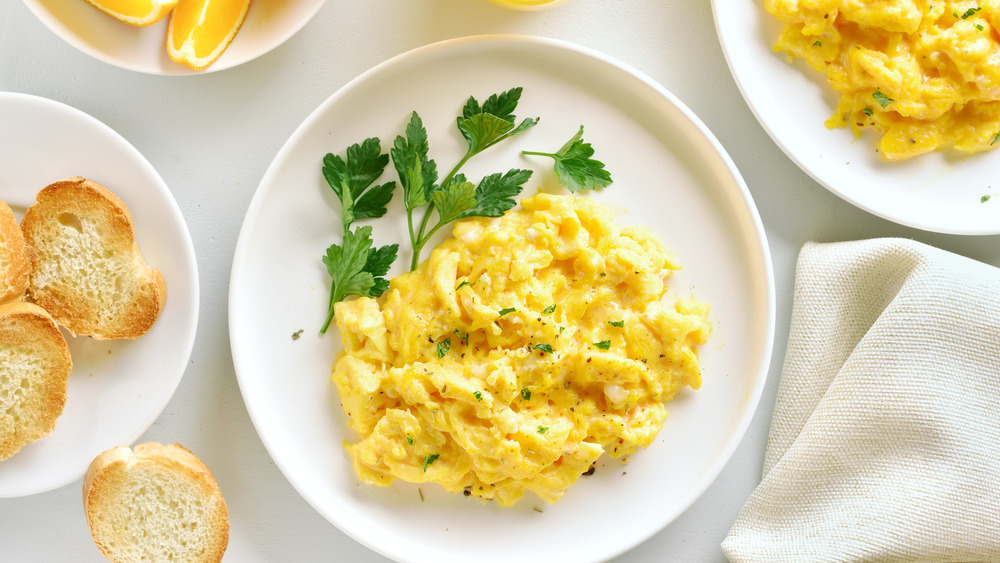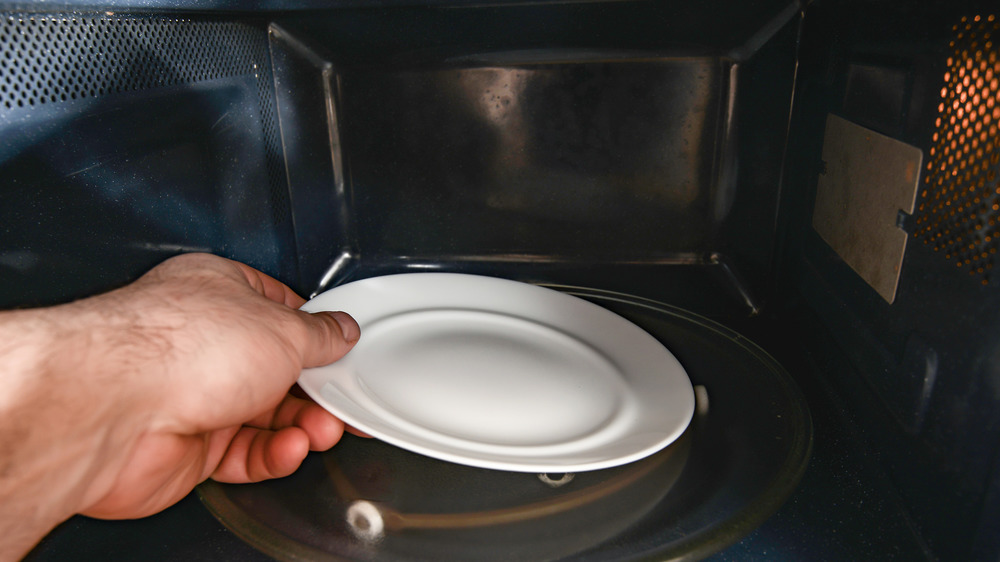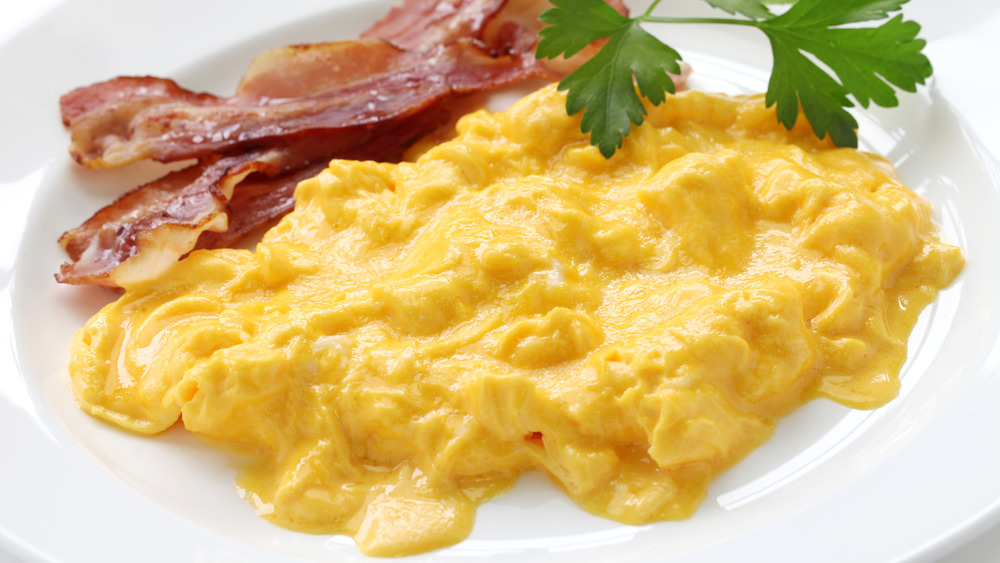Alton Brown's Secret To Better Scrambled Eggs Isn't What You Think
The internet loves eggs — whether it's how to cook the fluffiest scramble, how to expertly fold a pepper and onion omelette, or how to flawlessly poach an egg for a Benedict-inspired breakfast, the internet just. Loves. Eggs.
That being said, there are a whole lot of tips out there, ranging from professional chefs' preferred ingredient lists to secret stovetop methods (the kind that only a stereotypical dad who cooks Sunday breakfast for the kids might know). That's not to say they're bad tips — we're particularly fond of frying up a few eggs in leftover bacon grease (or using seltzer water if you're vegan), but there's more to a good batch of eggs than what they're cooked in and with.
While everyone online is full of opinions on how to make eggs, chef Alton Brown is approaching the breakfast corner of the internet from a new angle: He's schooling us on how to serve said eggs instead.
Brown's scrambled egg secret isn't in the ingredient list — it's in how you serve them
Alton Brown shared his favorite scrambled egg tip in an interview with Food Network. Instead of letting your eggs cook to completion in the pan, he recommends taking them off the stove one minute before they're done and plating them on a warmed dish. Since eggs cook quickly, they'll finish up on the heat of the plate, making them the ideal consistency and fluffiest possible texture at the first bite.
He suggests transferring the scramble from the pan just when the egg firms up, and is no longer runny. Give it about one minute, and your breakfast, brunch, or — let's admit it — easy dinner will be golden.
The key here is keeping the heat on the plate, so that the eggs don't cool down and dry out immediately after leaving the pan. Otherwise, by the time your toast is perfectly crisped and your glass of orange juice is poured, you're going to be stuck with a cold, sad scramble — no matter how many fancy ingredients the internet told you to use.
There are a few different ways to preheat your plate
The most crucial step here is preheating where you'll be serving the eggs, Brown explained to Food Network, since "cold plates suck the heat right out of food."
Some of his recommendations include tossing the plate in the oven on low — if the dish you'll be eating on is oven-safe. If not, you can submerge a pile of the dishes in some hot water; this might be the best route if you're entertaining guests for a fancy weekend brunch, and you have to focus more on making the mimosas and less on watching the oven.
Or, as The Spruce Eats notes, an easy option would be to stick the dish in the microwave for a minute or two (we're personally on board with this one, especially if it means elevating your everyday breakfast-for-one). They also suggest that if you're a regular egg-eater, you may just want to go all in and spend the extra cash on an electric plate warmer — the only thing worse than cold scrambled eggs, is cold scrambled eggs every single day.
To follow Brown's scrambled egg process exactly, you may need this ingredient
Sure, a warm plate is enough to turn a subpar breakfast into a good breakfast. But if you want to turn a good breakfast into a great one, you might as well follow Brown's scrambled egg recipe to a T. Once you nail down the serving technique, there's still some room for improvement, and Brown has another little-known piece of advice when it comes to perfecting eggs. That's where the mayonnaise comes in.
Yes, mayo, and yes, with scrambled eggs. According to the chef, adding a teaspoon of mayonnaise mixed with an equal amount of water to your eggs will give your scramble an incredible texture worthy of a preparing a hot plate (via Kitchn). He credits the deliciously decadent scramble with the idea that mayo is an emulsion, mixed with another emulsion: the eggs themselves. All of that oil, butter, and egg undoubtedly makes for a hearty plate. And believe it or not, Brown insists that your breakfast won't have even a trace of mayonnaise flavor.
In his 2016 cookbook Everyday Cook, the chef writes, "You'll never know the mayo is in there until you go and leave it out." Even if you're a dedicated mayonnaise hater, the creamy result — a perfect, silky scramble on a freshly warmed dish — is totally worth setting aside your differences with the condiment, according to Kitchn.



